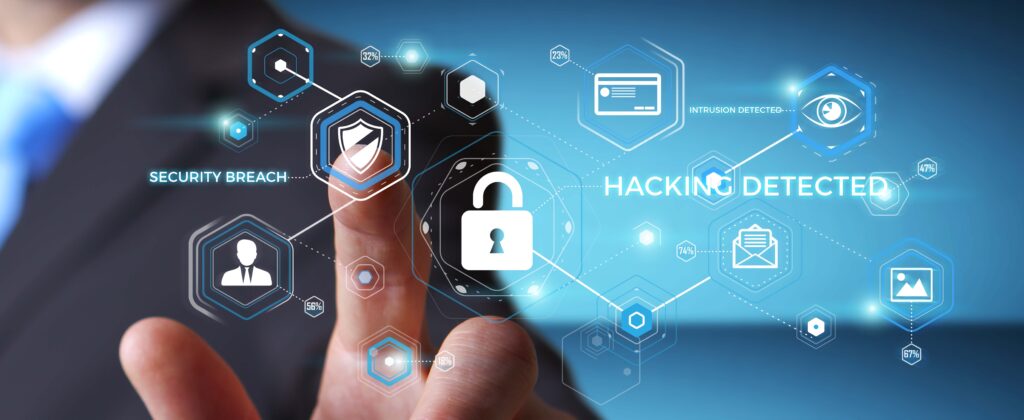In today’s interconnected world where cyber threats continue to evolve and grow in sophistication, organizations are constantly challenged to protect their valuable digital assets. The growing number of data breaches today has demonstrated that there is an invasive threat that continues to rise and affect businesses of all sizes and industries. As a result, businesses are challenged with implementing and managing effective measures to minimize the impact to the business while attempting to run their business at the same time. Enter threat hunting.
Traditional security measures are no longer enough to combat the ever-increasing risk landscape. As a result, threat hunting has emerged as a proactive approach to identify and neutralize threats before they cause significant damage. In this blog, we will explore the concept of threat hunting and delve into its importance in maintaining robust cybersecurity. If you are interested more in this specific skillset, you might be interested in the CompTIA CySA+ or the EC-Council SOC certification courses. Let’s define threat hunting and then investigate the benefits and some of the key components of this role in cybersecurity.

Understanding Threat Hunting
Threat hunting is an active and iterative process of searching for signs of malicious activity within an organization’s network and systems. Unlike reactive approaches that rely on predefined signatures or indicators of compromise, threat hunting takes a proactive stance by actively seeking out anomalies, unknown threats, and indicators of sophisticated attacks. It involves analyzing vast amounts of data, identifying patterns, and leveraging both human expertise and advanced technologies to detect and mitigate threats.
The Importance of Threat Hunting
- Early Detection and Mitigation: Threat hunting enables organizations to identify and respond to threats at an early stage, reducing the time window for attackers to dwell within the network undetected. By proactively hunting for indicators of compromise and potential vulnerabilities, security teams can stop attacks in their tracks and prevent extensive damage.
- Addressing Unknown Threats: Traditional security measures are often designed to detect known threats. However, advanced attackers frequently employ sophisticated techniques that bypass these conventional defenses. Threat hunting helps uncover these unknown threats by looking beyond predefined signatures, enabling security teams to stay one step ahead of cybercriminals.
- Enhancing Incident Response Capabilities: Threat hunting is not only about finding threats; it also plays a vital role in improving an organization’s incident response capabilities. By actively seeking out vulnerabilities and analyzing attack patterns, security teams can gather valuable insights into attacker methodologies, TTP’s (tactics, techniques, and procedures), and establish robust incident response plans.
- Improving Overall Security Posture: Threat hunting complements existing security measures and helps organizations improve their overall security posture. By continuously monitoring the network, identifying weaknesses, and closing security gaps, organizations can strengthen their defenses and reduce the attack surface, making it harder for threat actors to infiltrate their systems.
Threat intelligence can allow for the threat hunting to categorize the types of threat actors, such as nation-state or APT and how these actors can be associated to certain TTP’s. These use threat modeling to promote the creation of scenarios that show how a threat actor would attempt a potential intrusion and where the organization could be impacted by this event.
Threat hunting makes use of tools and processes for monitoring for intrusions such as a security information and event management (SIEM) system, because without such a resource, you will have to analyze log files and other system resources for analyzing the intrusion in a much more manual manner. This could potentially increase the effort and time to deal with the security attack. Let’s give a look at what are some of the key components to effective threat hunting efforts.
Key Components of Effective Threat Hunting
- Data Collection and Analysis: Threat hunting relies heavily on collecting and analyzing vast amounts of data from various sources within an organization’s network and systems. This includes logs, network traffic, endpoint telemetry, and security event data. Advanced analytics tools and machine learning algorithms can assist in processing and correlating this data to identify potential threats.
- Hypothesis-Driven Approach: Threat hunting is often driven by hypotheses or assumptions about potential threats based on existing intelligence, attack patterns, or indicators of compromise. These hypotheses guide the investigation and help focus the hunt for specific threats or vulnerabilities. Threat hunting tactics are developed around an awareness of adversaries’ TTP’s.
- Collaboration and Expertise: Effective threat hunting requires collaboration between different teams, such as security analysts, incident responders, and threat intelligence specialists. Combining their expertise and leveraging their collective knowledge allows organizations to identify complex threats and respond effectively.
- Continuous Improvement: Threat hunting is an iterative process that requires continuous improvement. Regularly reviewing and refining hunting techniques, incorporating new threat intelligence, and staying updated on the latest attack trends is essential to keep pace with evolving threats.
Final Thoughts
Threat hunting represents a proactive and powerful approach to cybersecurity that empowers organizations to stay ahead of the constantly evolving threat landscape. By combining human intelligence with advanced technologies, organizations can actively seek out threats, identify vulnerabilities, and respond rapidly, minimizing the impact of cyber-attacks. By embracing threat hunting as a core component of their security strategy, organizations can bolster their defenses and protect their digital assets in an increasingly interconnected world.
If you are currently or plan to take a threat hunting cybersecurity certification to enhance your skills in cybersecurity, Training Concepts would love to help prepare you to be successful on exam day.
Training Concepts offers many certifications for cybersecurity and would love to have the opportunity to guide you through them all with ease. Reach out to schedule a consultation if you’re interested in starting a career in technology or improving your security skills.
